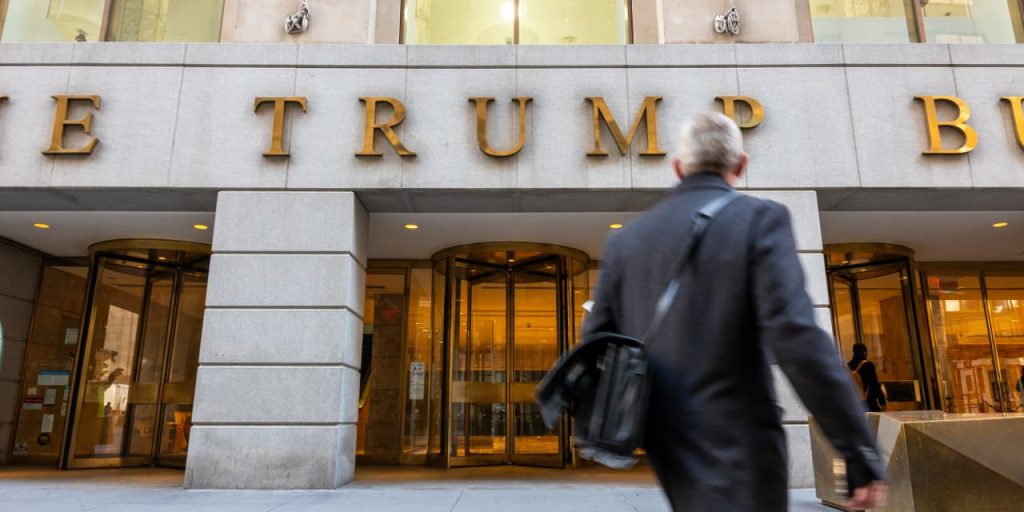Former President Donald Trump’s grip on 40 Wall St., a landmark Manhattan office tower, has tightened after the mortgage recently transferred to a lender specialized in sorting out problematic debt situations.
Loans created by Wall Street lenders typically transfer to “special servicing,” or a lender hired to recoup the most value for bondholders, when a borrower is an imminent default risk or wants to request a modification or another form of debt relief.
The 40 Wall St. loan, whose current balance is $122.2 million, transferred to special servicing in October, but in December the loan was no longer classified as such, according to CrediQ and Trepp, both of which track the performance of properties financed in Wall Street’s commercial-mortgage-backed securities market.
“The loan is in full compliance. We have never missed a payment, we have never paid late and we have never breached a loan covenant,” a Trump Organization spokeswoman said in a statement to MarketWatch. “We are incredibly proud of 40 Wall Street and we will continue to operate this world-class building.”
The spokeswoman didn’t respond when asked for details on the loan’s current status, any potential changes to debt terms at the property or why it was classified as out of special servicing. The special servicer declined to comment.
“When you are transferred to special servicing that means there’s likely some risk to bondholders,” said Matthew Cypher, director of the Steers Center for global real estate at Georgetown University, adding that in the 2007-08 global financial crisis borrowers typically transferred after they missed a debt payment.
In recent periods of stress, however, including during the COVID pandemic, many borrowers were transferred before defaulting, while seeking loan modifications, extensions or other forms of relief.
Loans typically move out of special servicing when a debt has been modified or extended, a borrower puts more equity into a property or a property’s finances improve.
Read: Trump’s businesses got $7.8 million from 20 countries when he was president: report
The 927-foot-tall 40 Wall St. sits across from the New York Stock Exchange in lower Manhattan. In the 1930s it was among Manhattan’s tallest skyscrapers. It has been a jewel of the Trump Organization’s real-estate portfolio since Trump reportedly paid less than $8 million for it in the early 1990s.
Importantly, 40 Wall St. is also among the former president’s buildings at the center of a civil fraud trial in New York, which is due to wrap up soon. New York Attorney General Letitia James sued Trump, the Trump Organization and other individuals in the business in 2022, claiming they illegally conflated values to secure favorable terms on real-estate loans.
Related: Trump lashes out, is admonished by judge during testimony in civil fraud trial
A Trump spokesperson didn’t respond when asked whether the lawsuit had been a factor in obtaining fresh financing at the property.
Trump took out $160 million loan on 40 Wall St. at a 3.665% rate in 2015 to refinance the skyscraper through Ladder Capital. The debt was later sliced up by Wall Street into several bond deals that were sold to investors.
The loan is scheduled to mature in July 2025, according to a Trepp researcher, who said data available in January to bondholders might provide additional clarity about the status of the property. Still, the property remains on a “watch list” of buildings viewed as facing potential trouble.
December servicing notes indicate occupancy has fallen below 80% from 97.8% when the loan was originated nearly a decade ago. Office properties in big cities have been reeling from higher rates and remote and hybrid work arrangements since the onset of the pandemic nearly four years ago.
Moody’s recently estimated that flexible work has reduced office demand by 14.5% nationally.
Read on: Office-loan delinquencies hit 5-year high in 2023 and likely will rise even higher, Moody’s says
Read the full article here




